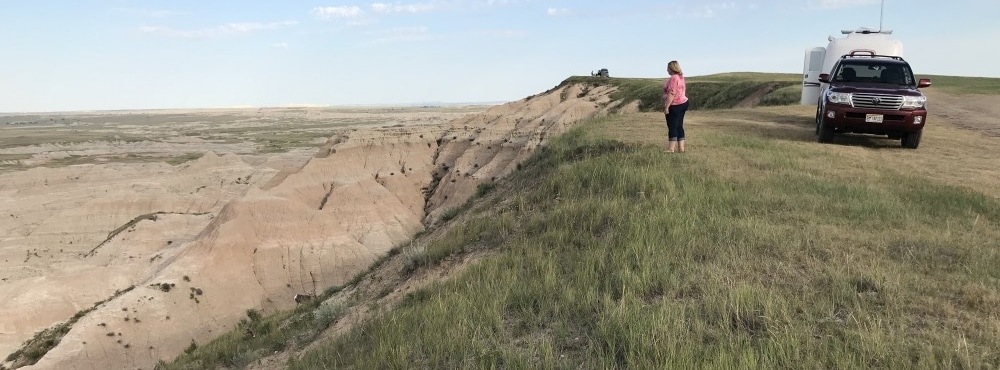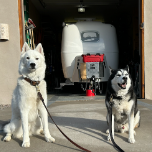-
Posts
107 -
Joined
-
Last visited
-
Days Won
6
KenB last won the day on November 21 2023
KenB had the most liked content!
My Info
-
Gender or Couple
Male
-
Location
Minnesota
My RV or Travel Trailer
-
Do you own an Oliver Travel Trailer, other travel trailer or none?
I own an Oliver Travel Trailer
-
Hull #
351
-
Year
2018
-
Model
Legacy Elite II
-
Floor Plan
Twin Bed Floor Plan
Recent Profile Visitors
The recent visitors block is disabled and is not being shown to other users.
KenB's Achievements
-
MAX Burner started following KenB
-

3Way Refrigerator Fan - Advice/Photos Please
KenB replied to Wandering Sagebrush's topic in General Discussion
I don’t think you get to blame that on a previous owner. I also have a 2018 and that’s the same way mine looks too. That IS the stock condition. I’ve had to re-tape the factory job, and then take another swing at it a year later after my 1st try came loose. It looked like they used scrap styrofoam and dunnage they picked out of the dumpster to make up spacers to wedge our refrigerators in place. Not only was it poor workmanship, mine was mounted in the opening crooked, mosquitos and road dust get into the camper around the refrigerator because it’s not sealed well against the outside, the refrigerator eventually worked its mounting screws loose, but the biggest disappointment was the refrigerator was delivered DOA. It seems 2018 was not a good year for Oliver refrigerators. I am the original owner. -
We stayed in Fort Collins in our camper last summer for a Toyota Land Cruiser event. There are boon docking campsites and a few electric sites up and down the Cache la Poudre River. There are YouTube drive-thru videos on-line of every campground along the river to help you pick a site. There are lots of sites up at the Horsetooth reservoir that might fit your needs. We couldn't get one, they were all booked months in advance. A very popular spot. Maybe if you keep looking you'll find a cancelation. In the end we ended up at the Fort Collins KOA. Not my ideal solution, but it was clean and well run. We just needed a spot to park and sleep, so we didn't avail ourselves of any of the park amenities. It was just an expensive spot for us to sleep for a couple of nights.
-
I've installed several dozen rivnuts and would not consider installing them in a fiberglass hole. They take too much effort to expand and I think they would at a minimum bulge the surrounding fiberglass. I wasn't familiar with these, but looked them up. I especially agree that the aluminum version would be great solution. The literature specifically mentions use in fiberglass as an application. If you have a Rivnut installation tool I bet it would work with these too.
-
I saw this earlier in the day and have been waiting for someone else to challenge this statement. I agree with the general statement that as AC frequency increases, current will as well. It just doesn't apply to those of us who connect our camper to the power grid. Maybe if you were boondocking and running a crude generator the frequency could change with a change in load, but not if powered by the grid. AC frequency in the US is fixed at the power plant at 60 Hz (in Europe and many other places it's 50 Hz). As far as I know there is no changing the AC frequency with any of our appliances or by loads at the campground. The purpose of having the EMS display a code for frequency is because you could be running off of a non-inverter generator, such as a PTO driven farm generator. You can end up with high or low frequency AC power if the tractor's PTO turns the generator input shaft too fast or too slow. It's very unlikely that this is the issue. A normal multi-meter doesn't have a setting for measuring AC frequency. A specialized multi-meter or an oscilloscope would be able to measure AC line frequency. Most of us are not carrying those specialized tools in our camper. HTH, Ken (I took a couple of electrical engineering classes a long time ago as engineering degree electives. If I've got it wrong myself, I don't mind being corrected. It's not something I use everyday.)
-

Truma Aqua Go hot water heater leak
KenB replied to srthomsen's topic in Mechanical & Technical Tips
A search for 'Keg Lube' will return a food grade o-ring lubricant brewers use on their brewing equipment. All the fittings in a brewery have o-rings in the mechanical connections in hoses and tanks that handle liquids. You can be assured that if they are being used in a brewery they won't impart and flavor or taste to the beer or your Oliver water supply. I'm not sure the same can be said of the tubes of silicone lube you'll find at the hardware store. You can buy keg lube in sizes that vary between 1 oz and 55 gallon drums. A 1oz tube would last forever for most people. And it'd be food grade. If I was on the road, I'd probably just use some cooking oil of some sort with a plan to replace it when I got home. It'd eventually go rancid. This is the keg lube I use. -
I have a little experience with corroded stainless steel. My experience is from when I TIG welded the stainless steel brewing fittings together for my home brewery. I already knew how to weld mild steel, but had to research the specifics of welding stainless steel and how to maintain its stainless characteristics. Are you using a chlorine bleach based cleaner on your sink? Stop doing that. Chlorine can dissolve the protective oxides on a stainless steel surface, exposing the metal surface to the environment which leads to rust. How about cleaning the sink with steel wool? That's not good either. Iron fragments can get microscopically lodged in the stainless which leads to rust. Use a ScotchBrite pad or bronze wool instead. In order to passivate (establish the protective chromium oxide layer) the recently cleaned spot on your stainless steel sink, you need to use a product containing oxalic acid. As mentioned earlier, Bar Keepers friend is one product. Others include Klein King Stainless and Copper Cleaner, and Revere Copper and Stainless Steel cleaner. Bar Keepers friend comes in a powder and a liquid. I always make a paste out of the powder and scrub the area clean with a ScotchBrite pad to passivate any recently welded stainless steel fittings. A paste of Barkeepers Friend powder and a green ScotchBrite scrubby pad should take care of the issue on your sink. Just keep the chlorine bleach products away from anything stainless steel. HTH, Ken
- 8 replies
-
- 16
-

-

-
I'm going to disagree that the cracks are merely cosmetic. In the parts of the country where we get snow and rain, water and ice melting chemicals get between the steel core and the stainless steel covers. The steel core rusts and bulges the covers. Now a socket won't go over the stainless cover or fit correctly, even if you pick a bigger socket. Since the core can turn to a rusty mush, the cover falls off and you're left with a vaguely hex shaped nut that doesn't fit any tools in your box. Your best attack is taking an undersized impact socket and hammering in onto the rusted, undersized, nut. I've also used a pneumatic chisel and a plasma torch to cut them away. I hope you have a full set of tools on the side of the road if you have a flat tire and bulged lug nuts. Cracks in the stainless cover exacerbate this problem. My opinion is from 25 years of teaching high school shop, including auto mechanics. 16 year old kids that bring their cars into the shop are usually driving rusty hand-me-down cars. GM vehicles come to mind as consistently having an issue with these type of lug nuts. I think I had to replace all the nuts on my kids Honda Element for the same reason too. In the SW you'll probably never have an issue, but for anyplace with regular snow and moisture, in the long term they're a bad idea. It's not just a cosmetic problem for many of us.
-
Nothing earth shattering, but I thought I’d share some observations regarding freezing or not freezing items inside the camper during cold weather. Our Elite II is often parked on a piece of lake property we own in north central Minnesota. It’s strictly boondocking. We were up last weekend and ran the heat for about 24 hours before we headed home. We shut off the heat when we left. Tonight I’m back up and noticed some items were frozen, some were not, depending on their location. The weather has been in the low 20’s to mid 30’s during the last three days since we left on Sunday noon. It’s now Wednesday evening and I’m back. I’d winterized everything on a previous trip, so I’m dry camping. The composting toilet makes this possible. My analog recording thermometer is mounted above the microwave and to the left of the cabinet door. It recorded a low of 20°F. My digital battery shunt said it was 25° in the battery compartment when I got here around 5pm. The 1 gallon dog bowl on the floor of the bathroom is frozen. A 1/2 full 5 gallon water jug stored on the bathroom floor is frozen. There were four disposable one gallon plastic drinking water jugs from the grocery store on top of the composting toilet. None were froze at all. The contents of the pantry including drinks and canned goods were all fine. The contents of the refrigerator were all fine. This included eggs, pickles, beer, drinking water, and condiments. (In the name of science I opened and enjoyed several cans of beer tonight just to be sure cans from both the top shelf, bottom shelf, and door were all fine!) The take away? Don’t store anything on the floor that you don’t want to freeze. Anything off of the floor or in a cabinet was fine. Not sure how long it’d be fine, but for this one data point it works out. (Saturday is the start of Minnesota firearms whitetail deer season. I keep the camper up north all fall as a base to bird hunt ruffed grouse with my pointing dogs. Since the orange army is taking over the woods for a couple of weeks, I’ll move the Oliver home for the winter and put it away in the back yard under a carport.)
- 1 reply
-
- 7
-

-

-

-

-
I tried the supports last weekend and am posting my follow up. They fit great and I was astonished at how dirty it was under my panels. They are going to be a great help once I get the trailer home and cleaned off before winter storage. Unfortunately they didn't help improve the charging as I'd hoped, in fact, they made it worse. Last Saturday was a very overcast day. The panels were only putting out two amps. My wife was inside calling out the charging rate as I repeatedly tipped and lowered the panels. When flat they put out the two amps, when raised they repeatedly put out only 1.4 amps. I know I was a little off on my aim with the panels towards the sun, but I was pretty close. I would have had to move the whole camper to improve the solar tracking aim by maybe 10%. I expected some improvement by tipping the panels up, but never would have guessed it would make it worse. It did drive home how important it is to keep the whole panel in the sun. With just the shade from my hand, the panel would drop from 2 amps to 1.1 amps. I've heard the individual cells that make up a panel are wired in series. This would seem to confirm it. One shaded cell practically kills the whole output from the panel. I'm not done experimenting with the tipped panels, but for now I am keeping the generator handy to top off the three Battleborn batteries when they get low. Next on the fall to-do list is a temperature driven relay to turn the battery heaters on if I'm sleeping or not around during the day when the temperature dips. I think I've got all the parts on hand, so it won't cost anything more to give it a try. I'm really impressed with this battery monitor from Thornwave a friend gave me to play with. Not only does it internally store all of it's charging data when I'm away, it has a relay control that can throw a relay signal due to voltage, temperature, timers, and a few others. I'm not sure why more people aren't using it. I mostly hear about Victron charge controllers, but not this one.
-
Just wanted to say Thank You to John for putting this mod documentation together. I knocked out a set of extension arms tonight. Tomorrow we are heading up north to some property we have. The camper is parked there for most of the summer and fall, but it's boon docking only. As the sun drops lower and lower on the horizon, the panels often can't keep up after a number of cloudy days and the additional load of running the heater occasionally at night during the fall. The fall color prediction from the Minnesota Department of Natural Resources this weekend is 50-75% of peak up at the camper. Temps will be 60-80 degrees, so not much use for the heater this weekend. I'm looking forward to trying out the arms and seeing how much they might improve solar charging. Thanks again John.
-
I've installed these fans too, but don't remember how long the machine screws were. I think you can look at the back of the speakers and can see approximately how thick the fiberglass is in this area. You can get to the speakers when you remover the access panels in the attic. You'll have to do that for the job anyway.
-
Thanks for the clarification John. It really doesn't matter to me anymore anyway. When I upgraded to three 100 AH Battleborn batteries this spring, I disconnected the seven pin charging wire from the bus under the street side bed knowing that the charging profile from my Land Cruiser alternator wasn't going to be a match for the new lithium batteries. Someday if I make the compressor refrigerator upgrade I'll consider the Redarc DC to DC charger too. For now the solar meets all of our charging needs, including running a CPAP machine at night. BTW - Just came back inside to enjoy the A/C for a few minutes. I'm changing out the radiator on the Land Cruiser today before heading to Colorado next week with the Oliver for a 4x4 trip near Fort Collins with some of the guys from Ih8mud.com forum. The radiator has the typical crack around the old design raised boss.
-
What do you mean with the Land Cruiser exception? How do they charge our Olivers differently? Thanks, Ken
-

Which breakers power down the whole trailer
KenB replied to Kansa's topic in Mechanical & Technical Tips
I'm in the middle of upgrading from four 6V AGM batteries to three Battle Born lithium batteries and have learned quite a bit about the electrical system on our Elite II this past week. On my 2018 there isn't a master electrical cut off switch. I'm installing one as part of the lithium upgrade. Disconnecting the battery cables will power down the trailer, but the lines from the solar controller to the battery will still be hot, at least on my 2018. There is a dedicated circuit breaker for the solar, it's just not the type that you can manually disconnect/reset, so you can't easily disable the solar charging with it. If you don't understand this statement completely, please don't start disconnecting battery terminals. I don't know what an accidental dead short to the live solar leads would do to the system, nothing good I'm sure. If you just want to kill power to the propane detector under the dinette, there is a 1 amp fuse under the street side bunk on a 2018 in the wire that leads to the propane detector. The wire for it comes off of the hot side of the circuit breaker that is also under that bunk. The propane detector is wired direct to the battery and is always hot. The only way to cut power to the propane detector on mine is to pull that fuse under the street side bunk. Though finding and pulling the 1 amp fuse isn't a big deal, I like John's idea of just covering up the openings on the propane detector best and not messing with the electrical. HTH, Ken



